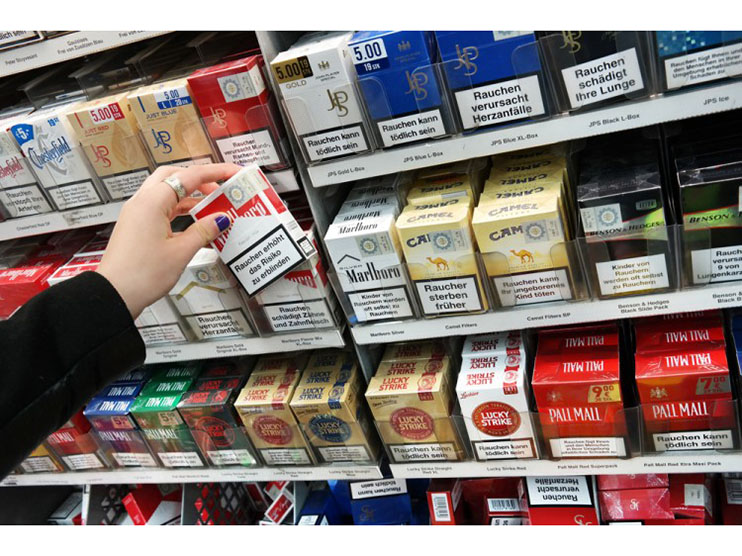Industry Talk
A new Paradigm Shift for the Tobacco Industry?
by Ghada Azzi
November 9, 2020
.jpg) Advertisement
AdvertisementThis means that the traditional cigarette (or ‘combustible’) has been joined by a portfolio of products spanning new categories: first-generation e-cigarettes; vapours, tanks, and mods (VTMs) with open refillable systems; tobacco-heated products; and licensed medicinal products.
While public health has struggled to cope with these sudden changes and disruptive innovations, the tobacco industry has responded with clear and productive focus.
Their expertise in nicotine and enormous financial resources played in their favor. It enabled portfolio diversification in which combustible and alternative smoking products coexist. Tobacco multinationals turned ANDS into a genuinely mass-market product appealing to its global customers and they have made great progress since the advent of the first e-cigarette.
Today, given the continued buoyancy of the combustibles market, they keep using their extensive resources to continue their efforts.
The arrival of e-cigarettes and ANDS has enabled the tobacco industry to create multiple opportunities. Specifically, they have been able to diversify into broader product portfolios in which combustible and alternative products can comfortably coexist, set new long-term strategic goals, develop scientific and even regulatory capacity, and to possibly retrieve their corporate reputations by seeming to align with public health objectives.
One of the TI’s main strengths is its customer base, which is a vital asset since business strategy is driven by consumer needs’. People that are using e-cigarettes are the people that used to smoke. So the consumers are the same. It is, therefore, an absolute natural notion that tobacco companies would go and start producing e-cigarettes when their consumers have left their product category and gone to another product category. Given that the global pool of smokers is about a billion strong, this was framed as a major advantage for the industry.
However, combustibles will remain the mainstay of tobacco companies’ commercial delivery for a long time, because it is said to be providing the funding required to develop less-harmful next-generation products, a sector in which the industry aims to achieve global leadership in 10 years.
The ultimate objective for a company like Philip Morris international (PMI) is to ‘become the undisputed leader of the Reduced-Risk Product (RRP) category' more commonly known as vaping products, and to reach to the smoke-free future it is planning for. As a matter of fact, in 2016, PMI announced that it was committing to a major business transformation — a move away from cigarettes and other combustible tobacco products and toward healthier, smoke-free alternatives to nicotine delivery. The goal by 2025, the company declared, was to get at least 40 million of its adult customers to stop smoking and switch to one of the alternatives, with the goal, ultimately, of achieving a “smoke-free future.”
As smokers are not a homogenous group anymore, the Reduced-Risk Product category has offered the tobacco industry the chance to move to a much stronger ‘portfolio’ business model that sees itself as ‘leading the field of the science’ with a large body of [TI-funded] studies that keep being published and that are fundamental for business transformation. The science is extremely high quality because it faces very, very, robust scrutiny and it’s done with very high quality labs, very high quality methodology and it’s published in good quality journals that are not specifically on tobacco. To assess the reduced-risk potential of nicotine and new tobacco products being developed, companies like Philip Morris have established ‘PMI Science’ to ‘conduct rigorous and scientific assessment to demonstrate about alternative products reduce risk and comply with emerging standards.’
Tobacco companies want consumers to be aware of all the risks. And this is a new paradigm shift for the tobacco industry. Never before this industry has invested such a huge amount of time, resource, expertise, in the science to enable the conversation about risks and addiction and to objectively look at the best route forward.
It is worth noting though that the global cigarette industry was valued at more than US$683 billion in 2016 compared to the global e-cigarette market, which was worth US$11.92 billion*although this is expected to reach US$48 billion by 2023*.
For an industry that is changing as rapidly as the world around it, it remains to be seen how these new alternative products and disruptive technology will evolve and how the positive science behind vaping products- seen as the beginning of the end for tobacco use - and the better regulation such findings should inspire - will ensure future growth. A future built on a growing consumer base that seems to enjoy the wider choices that the tobacco industry's ever-expanding portfolio offers.
*(Campaign for Tobacco Free Kids, 2017; TechNavio, 2016)
* (PRNewswire, 2018).



.jpg)










